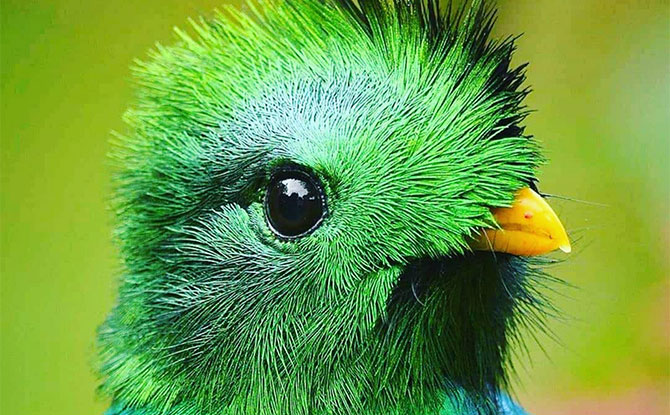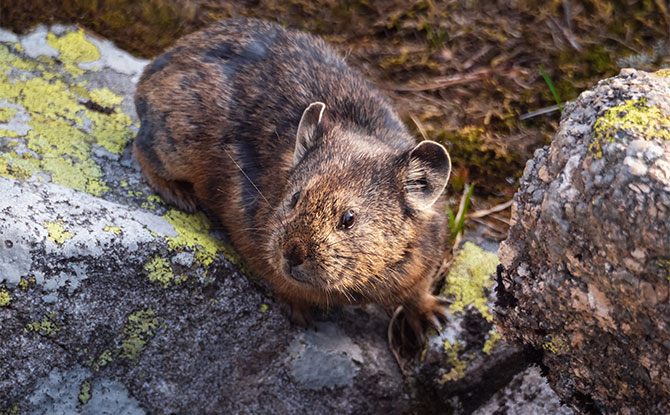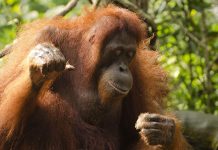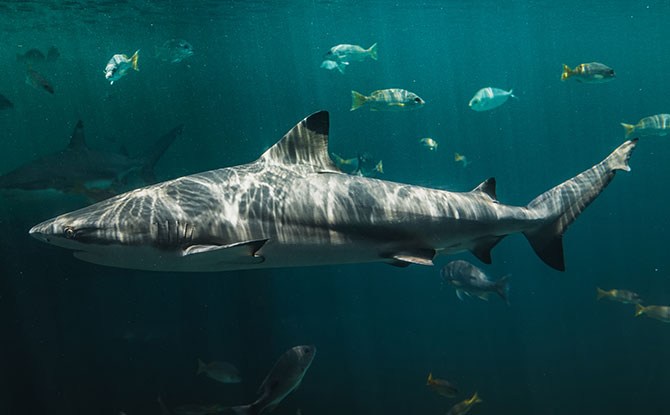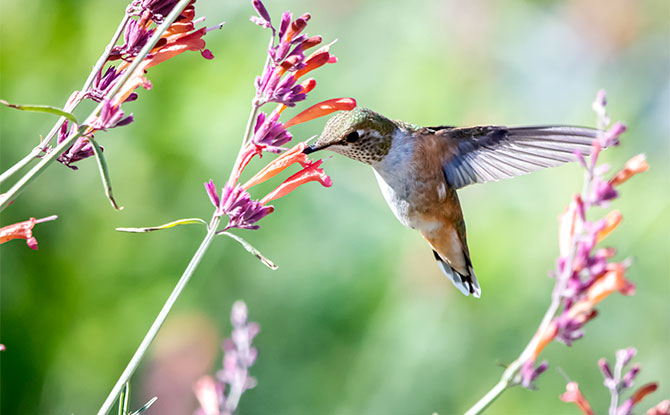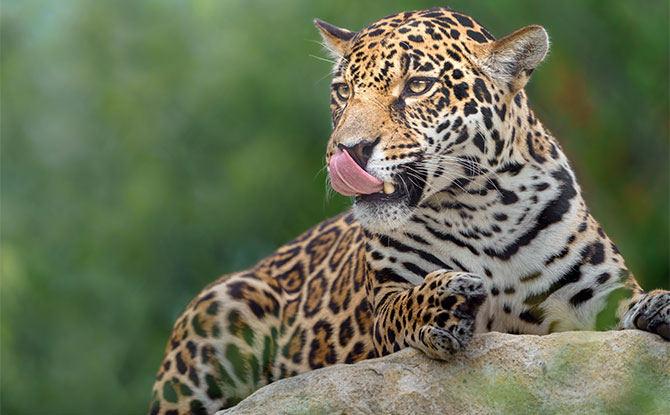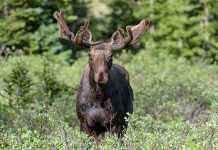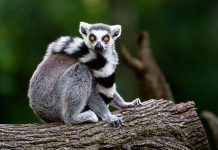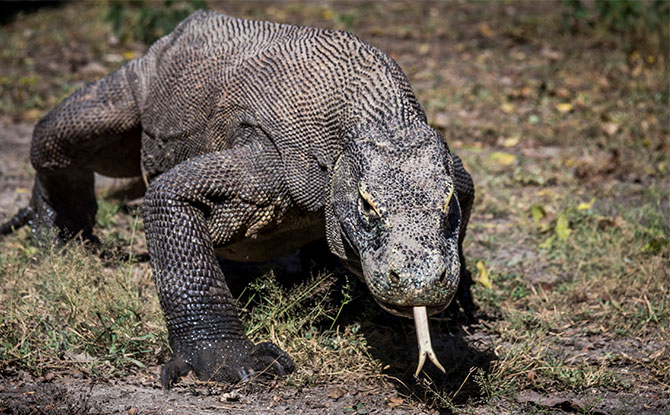

Looking for animals starting with K! From magnificent mammals to fascinating birds and mesmerizing reptiles, this collection of animals with names that start with the letter K showcases the diverse and extraordinary creatures found in the world.
Animals Starting with K
Let’s dive into the enchanting world of animals beginning with K and discover the marvelous species that roam our planet.
Kangaroo


Kangaroos are fascinating marsupials that are native to Australia. They are known for their unique physical features and distinctive hopping behavior. Kangaroos are characterized by their muscular hind legs, long tails, and large feet. These features enable them to hop at high speeds and cover long distances effortlessly. They also have powerful arms that they use for balance and agility.
BE PSLE-READY: Join Expert Educators for Revision Boosters to Empower P6 Students
BURP: Join the Sound Collector on a Whimsical Chase at Esplanade – Theatres on the Bay
WEEKEND IDEAS: Get Inspirational Ideas of Things to Do
Kangaroos are primarily found in the grasslands, woodlands, and forests of Australia. They have adapted well to various types of environments, from arid deserts to lush coastal regions. Each kangaroo species has its preferred habitat, which influences their distribution across different regions.
They are herbivores and have a specialized diet consisting of grasses, shrubs, and leaves. They have evolved to efficiently extract nutrients from low-quality vegetation, making them well-suited for their habitats. Kangaroos have chambered stomachs that allow them to digest their fibrous diet more effectively.
There are several species of kangaroos, each with its distinct characteristics. The red kangaroo is the largest kangaroo species and is known for its striking red coat. The eastern grey kangaroo is widespread and has a more compact build compared to its larger relative. The western grey kangaroo is similar in appearance to the eastern grey kangaroo but has a slightly different range.
Kangaroos are not only iconic symbols of Australia but also fascinating creatures with unique adaptations and definitely a worthy species to start off our list of animals that start with the letter K.
Koala


Koalas are fascinating animals known for their adorable appearance and unique lifestyle. These iconic marsupials are native to Australia and are primarily found in the eucalyptus forests of eastern and southeastern parts of the country, making the koala habitat an integral part of their survival.
The koala diet largely consists of eucalyptus leaves, which provide them with the necessary nutrients and water content. Koalas’ specialized digestive system allows them to break down the tough fibers in eucalyptus leaves, which are toxic to most other animals.
Although koalas are undeniably cute, they face various threats to their population. Loss of koala habitat due to deforestation, urbanization, and climate change poses significant challenges to their survival. Additionally, diseases such as chlamydia and the threat of bushfires further compound their conservation status.
Kookaburra
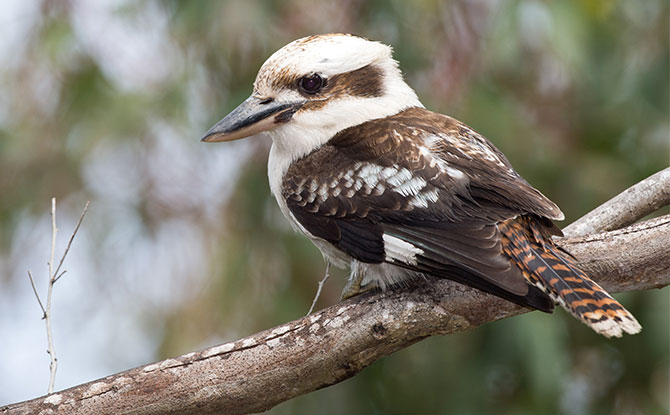

The kookaburra is an iconic Australian bird known for its distinct laughter-like call. It belongs to the kingfisher family and is also commonly referred to as the laughing kookaburra. This species is famous for its unique vocalization, which resembles human laughter and can be heard throughout the day in its native habitats.
The kookaburra is predominantly found in eastern Australia, including Queensland, New South Wales, and Victoria. It prefers a variety of habitats, including woodlands, forests, and urban areas with access to water bodies such as rivers and lakes. These birds have adapted well to human presence and can often be spotted in suburban gardens and parks.
The diet of kookaburras primarily consists of small animals, including insects, reptiles, frogs, birds, and small mammals. They are opportunistic hunters and often perch on tree branches or power lines to detect their prey. Once spotted, they swoop down and capture their target with their strong beaks.
In addition to their distinct call and feeding habits, kookaburras also exhibit interesting behavior. They are highly territorial birds and often live in family groups. These groups typically consist of a breeding pair and their offspring from previous years. The juveniles from previous breeding seasons help raise the new chicks and assist with hunting.
Kookaburras are known for their cooperative breeding behavior, where multiple members of the family group help in nesting and raising young chicks. They construct nests in tree hollows or termite mounds, using sticks and other plant material. The female usually lays between 1 to 4 eggs, which are then incubated by both parents.
Kingfisher


Kingfishers are a fascinating group of birds known for their vibrant colors and unique hunting techniques. With around 90 species worldwide, they can be found in various habitats such as rivers, lakes, and coastal areas.
One of the most striking features of kingfishers is their brilliant plumage. Their colorful feathers, ranging from shades of blue, green, and orange, make them a delight to behold. These vibrant colors help them blend into their surroundings and provide camouflage while hunting.
Kingfishers have a specialized diet primarily consisting of fish, although some species also eat insects, crustaceans, and amphibians. They have sharp beaks adapted for catching and gripping their prey. Their hunting techniques are remarkable, with some species using a dramatic plunge-diving method to catch fish, while others patiently wait perched on a branch, ready to snatch their meal from the water’s surface.
There are several types of kingfishers found worldwide, each with its own unique characteristics. The Belted Kingfisher, found in North America, is known for its loud rattling call and large size. The Pied Kingfisher, commonly found in Africa and Asia, is known for its distinctive black and white plumage and hovering hunting style. The Sacred Kingfisher of Australia and New Zealand is revered as a sacred bird in some indigenous cultures.
Koel
The koel is a fascinating bird species known for its distinctive call and unique breeding habits. Also referred to as the Asian koel, the bird can be found in various regions across Asia, including India, Bangladesh, and Southeast Asia. These birds are known to inhabit forests, woodlands, and even urban areas.
The diet of the koel primarily consists of fruits, berries, and insects. They have a preference for figs and other ripe fruits, which makes them an important seed disperser in their ecosystem.
One fascinating aspect of the koel’s breeding habits is its unique reproductive strategy. Unlike most birds, the koel is a brood parasite, meaning it lays its eggs in the nests of other bird species, often songbirds. The female koel carefully selects a suitable host’s nest, where it lays a single egg to be incubated by the unsuspecting host parents.
Once the koel chick hatches, it often grows faster and larger than the host chicks, demanding more food and attention from the foster parents. This behavior ensures the survival of the koel offspring, even at the expense of the host’s own chicks.
Interestingly, male koels are known for their distinct calls, often described as a loud and repetitive “ko-el” or “koo-oo.” The call of the male koel is commonly associated with the arrival of the monsoon season, making it an iconic sound of the tropics.
Killer Whale
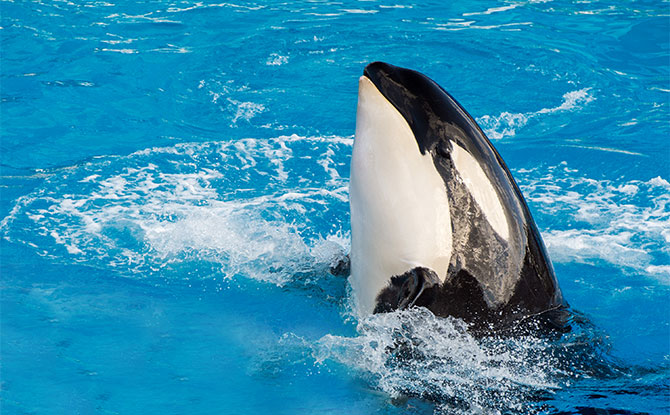

The killer whale, also known as the orca, is one of the most fascinating creatures in the ocean. With their striking black and white coloring and impressive size, killer whales are often referred to as the “wolves of the sea” due to their strong social structure and hunting techniques. Found in oceans around the world, these majestic marine mammals are known for their intelligence, agility, and predatory nature.
Killer whales are highly social animals that live in pods consisting of extended family members. These pods can range in size from a few individuals to over 30 members. They communicate through a series of clicks, whistles, and calls, allowing them to coordinate their hunting strategies and maintain social bonds within the group.
One of the most remarkable aspects of killer whales is their diverse diet. These apex predators have a reputation for being fierce hunters, and their diet reflects their opportunistic nature. While fish, such as salmon and herring, make up a significant portion of their diet, killer whales are also known to prey on other marine mammals, including seals, sea lions, and even larger animals like minke whales and elephant seals.
Despite their ferocious hunting capabilities, killer whales are also intelligent and highly adaptable. They have been observed using unique hunting strategies, such as creating waves to wash seals off ice floes, and even beaching themselves temporarily to capture prey.
Komodo Dragon


The Komodo dragon, scientifically known as Varanus komodoensis, is the largest lizard species in the world. It is native to the islands of Komodo, Rinca, Flores, Gili Motang, and Padar in Indonesia. Komodo Island, part of the Lesser Sunda Islands, is particularly famous for its population of these magnificent creatures.
Komodo dragons are fascinating predators that have adapted to the harsh conditions of their environment, making them excellent swimmers and climbers. These reptiles can grow up to 10 feet in length and weigh around 150 pounds, making them formidable apex predators.
The diet of a Komodo dragon mainly consists of carrion, including deer, pigs, and buffalo. However, they are also skilled hunters capable of ambushing and overpowering their prey. The Komodo dragon possesses a venomous saliva that contains numerous bacteria, which can cause a deadly infection in its bitten victims.
Although Komodo dragons are generally shy and elusive, if threatened or hungry, they can become aggressive. Their bites are notorious for causing severe injuries due to the combination of sharp teeth and venomous saliva.
Kestrel


Kestrels are small falcons known for their impressive hunting skills. These birds of prey are widespread throughout the world, with the common kestrel being the most well-known species. They are commonly found in open habitats such as fields, meadows, and grasslands, where they can easily spot their prey.
The diet of a kestrel primarily consists of small mammals, including mice, voles, and shrews. They are also known to feed on insects, birds, and reptiles. Kestrels have excellent eyesight and use their keen vision to locate their prey from high perches or while hovering in the air.
One interesting behavior of kestrels is their hunting technique. They use a combination of soaring, hovering, and short bursts of flight to catch their prey. When hunting, kestrels use their sharp beak and talons to swiftly capture and subdue their target. They are agile fliers and can change direction rapidly to pursue their prey.
Another remarkable feature of kestrels is their ability to adapt to various habitats and climates. They can be found in both urban and rural areas, including cities and towns. Kestrels are cavity nesters and often utilize old tree holes, crevices, or man-made structures for nesting.
Kudu
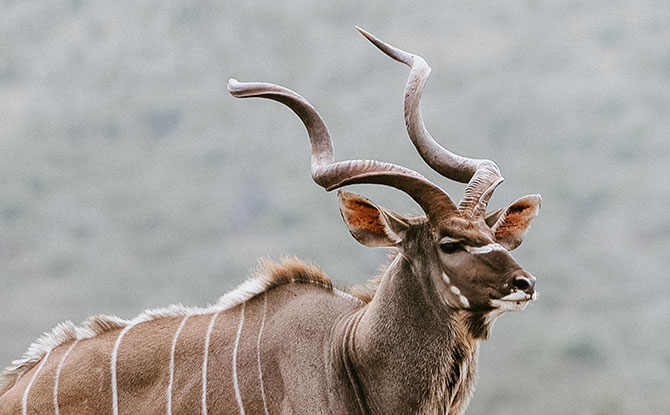

The kudu is an elegant antelope species found in various parts of Africa. With their striking appearance and unique features, kudus are a fascinating species to explore. Let’s delve into their physical characteristics, habitat, and interesting facts about their behavior.
The greater kudu (Tragelaphus strepsiceros) is the larger of the two kudu species, measuring up to 9 feet in length and weighing around 600 pounds. It is known for its spiraled, majestic horns, which can reach lengths of over 5 feet in males. The greater kudu has a reddish-brown to grayish-brown coat with distinctive white vertical stripes along its body, providing excellent camouflage in their natural habitat.
On the other hand, the lesser kudu (Tragelaphus imberbis) is smaller in size, measuring around 4 to 5.6 feet in length and weighing up to 200 pounds. Unlike the greater kudu, the lesser kudu has softer, thinner horns and a more yellowish-brown coat with fewer stripes.
Kudus are primarily found in woodland and thick bush habitats across sub-Saharan Africa. They have adapted to both open savannahs and densely vegetated areas, making them versatile in their choice of habitats. These antelopes are native to countries such as South Africa, Namibia, Zimbabwe, Botswana, and Tanzania.
One interesting behavior of kudus is their ability to jump high when startled or threatened. Despite their large size, they are capable of clearing fences and obstacles up to 8 feet in height, aided by their strong legs and muscular bodies. This instinctive behavior helps them evade predators and remain safe in their natural environment.
Additionally, kudus are predominantly browser herbivores that feed on leaves, shoots, fruits, and bark. They have a selective feeding habit, targeting various plants depending on their nutritional needs and availability. Kudus are also known to have a specialized digestive system that allows them to extract maximum nutrients from their food sources.
It’s worth mentioning that although kudus are known for their impressive horns, only male individuals have them. These horns not only serve as a display of dominance but also function in defending territories and engaging in ritualized sparring during mating seasons.
Kakapo
The kakapo is a critically endangered flightless parrot that is native to New Zealand. It is one of the most unique and fascinating birds in the world.
The kakapo is known for its distinctive features, including its moss-colored feathers, large and expressive eyes, and distinct facial disc. These adaptations help the kakapo blend seamlessly into its forest habitat.
One of the most remarkable aspects of the kakapo is its breeding behavior. Unlike most parrots, the kakapo is lek breeding species, which means that males gather in specific areas called leks and compete for the attention of females. They use a variety of displays and calls to attract mates, making this breeding ritual a sight to behold.
Due to habitat loss, predation by introduced species, and low reproductive rates, the kakapo population has declined to critically low numbers. However, dedicated conservation programs have been implemented to protect this iconic species. These efforts include intensive monitoring, predator control, and captive breeding programs to increase the population and genetic diversity of the kakapo.
Kelpie
The kelpie is a remarkable breed of working dog renowned for its outstanding herding abilities. Originating from Australia, the kelpie has earned a reputation as one of the most intelligent and versatile herding dogs in the world.
Australian kelpies are known for their agility, stamina, and keen instincts. They possess a lean and athletic build, enabling them to navigate rugged terrains with ease. With their characteristic dark coats, which come in various shades of black, brown, and tan, they blend seamlessly into the Australian landscape.
Not only are kelpies visually striking, but they also have a temperament perfectly suited for their working role. They are highly trainable, responsive, and dedicated to their tasks. With their strong work ethic and natural herding instincts, kelpies excel in assisting farmers with livestock management.
The kelpie’s history can be traced back to the late 19th century when it was bred for its exceptional herding skills. Kelpies display an impressive level of intelligence, making them capable of independent decision-making while herding. They are renowned for their ability to anticipate and control the movements of livestock, ensuring efficient and effective herding. Their natural instincts combined with their intelligence allow them to adapt to different herding tasks and environments.
Kangaroo Rat
The kangaroo rat is a fascinating small rodent known for its unique adaptations and kangaroo-like hopping. It is primarily found in desert environments, where it has developed specialized features to survive in harsh conditions.
The kangaroo rat is well-suited to the desert habitat due to its ability to conserve water. It has highly efficient kidneys that allow it to produce concentrated urine, minimizing water loss. Additionally, it obtains most of its water needs from metabolic water, which is generated through the digestion of food.
This desert kangaroo rat has also adapted to the arid environment by having specialized kidneys that can reabsorb a greater amount of water from urine, further reducing water loss. It also retains water through behavioral adaptations, such as burrowing underground during the day to escape the heat and conserve moisture.
In terms of diet, the kangaroo rat primarily feeds on dry seeds, which provide essential nutrients and energy. It has long, sharp incisors that allow it to crack open the tough seed shells. These teeth continually grow, ensuring they are always sharp and efficient.
The kangaroo rat uses its powerful hind legs, which are longer than its forelimbs, to move quickly and perform its distinctive hopping movements. This unique adaptation helps it navigate the desert terrain efficiently and effectively evade predators.
King Cobra
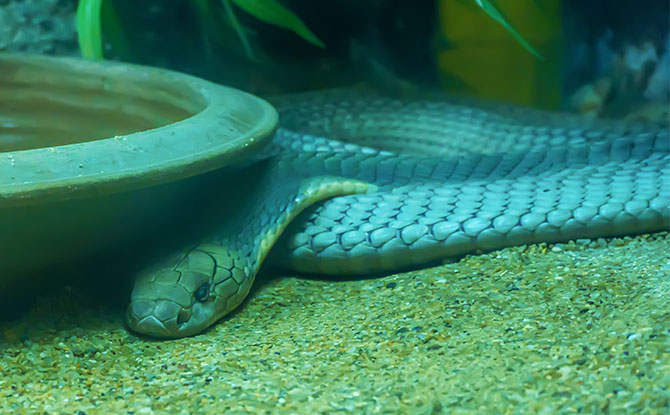

The king cobra, scientifically known as Ophiophagus hannah, holds the title for being the world’s longest venomous snake. Found primarily in the forests of Southeast Asia, this magnificent reptile has captivated the imagination of humans for centuries.
King cobras are renowned for their impressive size, with adults reaching lengths of up to 18 feet. Their venom, although deadly, is essential for subduing and digesting their favorite prey: other venomous snakes.
In their native habitat, which includes dense forests, mangroves, and even agricultural fields, king cobras play a vital role in controlling populations of venomous snakes. Their diet consists mainly of rodents, lizards, and birds, making them an apex predator in their ecosystem.
King cobras are known for their unique defensive display. When feeling threatened, they raise their upper body off the ground, spread their iconic hood, and emit a deep hissing sound. This behavior intimidates potential predators and serves as a warning to stay away.
Despite their venomous nature, king cobras are generally non-aggressive towards humans unless provoked. However, it’s crucial to exercise caution and respect their space when encountering them in the wild.
Kit Fox
The kit fox is a small fox species native to North America. It is known for its adaptability to different environments, particularly desert habitats. The kit fox’s habitat includes arid regions with sparse vegetation, such as desert scrublands, grasslands, and semi-arid landscapes.
Unlike its close relative, the swift fox, the kit fox has unique adaptations that allow it to survive in harsh desert conditions. Its large ears help regulate body temperature and enhance hearing, while its sand-colored fur provides camouflage against the desert backdrop.
The kit fox primarily feeds on small mammals, such as kangaroo rats, cottontail rabbits, and ground squirrels. It is also known to consume birds, reptiles, insects, and plant matter when food is scarce. Its diet is well-suited to its desert habitat, where water sources can be limited.
Due to its secretive nature and low population densities, the kit fox is not frequently encountered by humans. However, conservation efforts are underway to protect its habitat and ensure its survival. These efforts include the safeguarding of important breeding sites and the implementation of measures to mitigate threats such as habitat loss and fragmentation.
Kangaroo Island Emu
The Kangaroo Island Emu was an extinct flightless bird species that was native to Kangaroo Island in Australia. It was one of the largest emu species, standing up to 6 feet tall. These emus had distinct features including elongated legs, strong beaks, and soft feathers that ranged in color from brown to gray.
The Kangaroo Island Emu was an integral part of Kangaroo Island’s wildlife, playing a significant ecological role. However, due to various factors such as hunting, habitat loss, and competition with introduced species, the population of Kangaroo Island Emus declined rapidly, leading to their extinction. Today, they are considered a tragic loss to biodiversity and a stark reminder of the importance of conservation efforts.
Koi Fish
Koi fish is a beloved species of colorful ornamental fish that are commonly kept in ponds. With their vibrant hues and graceful swimming patterns, koi fish add beauty and tranquility to any outdoor space.
The history of koi fish can be traced back to ancient China, where they were first bred for their vibrant colors and patterns. Over the years, koi fish have become symbolic in different cultures, representing various meanings such as good luck, abundance, and perseverance.
There are several popular varieties of koi fish, each with its unique color patterns and characteristics. Some of the most well-known varieties include the Kohaku, with its white body and vibrant red markings, the Sanke, featuring white, red, and black patterns, and the Showa, known for its black body with red and white markings.
Katydid
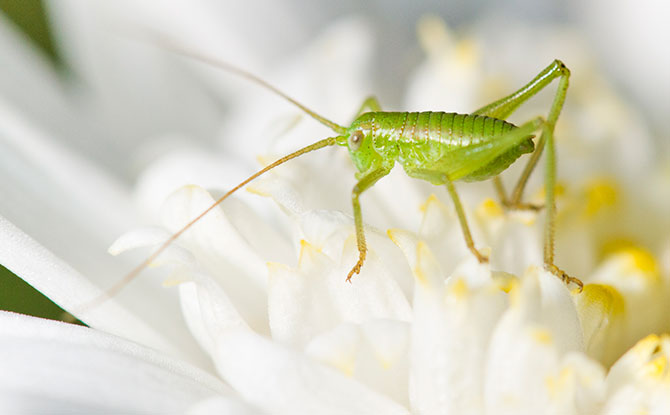

The Katydid is a fascinating insect belonging to the family Tettigoniidae. Found in various habitats around the world, these creatures are commonly known as bush crickets.
Katydids can be found in a wide range of habitats, including forests, jungles, grasslands, and even urban areas. They prefer environments with abundant vegetation, as it provides plenty of food and shelter. These insects are known for their excellent camouflage, allowing them to blend in seamlessly with their surroundings.
Katydids are primarily herbivorous, feeding on a variety of plant materials such as leaves, flowers, and fruits. They use their strong mandibles to chew through the tough plant tissues. Some species are also known to be opportunistic feeders, consuming small insects and other arthropods if the opportunity arises.
Katydids are known for their distinctive chirping sounds, produced by rubbing their wings together in a process called stridulation. These sounds are primarily used for communication, attracting mates, or establishing territories. Each species has a unique call, allowing them to identify one another.
The life cycle of a katydid typically involves various stages, including egg, nymph, and adult. After mating, the female lays her eggs on plant stems or leaves. The eggs hatch into nymphs, which undergo a series of molts as they grow and develop. Eventually, the nymphs reach adulthood and become fully winged adults capable of reproducing.
Kiwi


The kiwi is a fascinating flightless bird endemic to New Zealand. Known for its unique features and adaptations, the kiwi has captured the hearts of many.
With its round body, small wings, and long beak, the kiwi is perfectly adapted for a terrestrial lifestyle. These adaptations enable the kiwi to forage for food, such as insects, worms, and berries, in its forest habitat.
New Zealand is home to several species of kiwi, including the North Island brown kiwi, the Okarito brown kiwi, and the Southern brown kiwi. Each species has its own unique characteristics and is found in specific regions of the country.
King Penguin
The king penguin, scientifically known as Aptenodytes patagonicus, is a majestic species of penguin that inhabits the frozen landscapes of Antarctica. These regal birds are well-adapted to survive in the harsh conditions of their habitat, showcasing remarkable physical characteristics and behaviors that enable them to thrive in the Antarctic region.
One of the distinguishing features of the king penguin is its large size, making it the second-largest species of penguin in the world, surpassed only by the emperor penguin. Adult king penguins can reach heights of up to 3 feet and weigh anywhere between 26 to 37 pounds, showcasing an impressive presence amidst their icy surroundings.
The king penguin’s black and white plumage, which often appears sleek and shiny, serves as excellent camouflage while swimming in the ocean. Additionally, their long, slender flippers enable them to navigate through the water with remarkable agility, propelling their streamlined bodies in pursuit of their prey.
When it comes to adaptations, king penguins have several remarkable strategies to cope with the extreme cold of the Antarctic environment. They possess a dense layer of blubber beneath their skin, providing insulation and acting as a valuable energy reserve during long fasting periods, such as when they are incubating their eggs or molting.
Furthermore, king penguins have an efficient thermoregulation mechanism. They huddle together in large colonies, collectively generating heat and protecting themselves from the frigid temperatures. This communal behavior helps minimize heat loss and ensures the survival of individuals even in the most inhospitable of climates.
In addition to their exceptional physical adaptations, king penguins exhibit fascinating behaviors to optimize their chances of survival. They have evolved a sophisticated breeding strategy known as “egg brooding,” where the male penguins incubate the single egg laid by each female on their feet. This allows the females to go on long foraging trips to find food, replenishing their energy reserves while the males provide warmth and protection to the developing chick.
The king penguins’ diet primarily consists of fish, such as lanternfish and various species of squid, which they catch by diving to astonishing depths of up to 300 meters. They have powerful beaks and a specialized tongue equipped with backward-pointing spines to grip and swallow slippery prey.
Kinkajou
The kinkajou is a fascinating rainforest mammal known for its unique characteristics and behaviors. This nocturnal animal, also called the honey bear, can be found in the lush rainforests of Central and South America. With its agile body and impressive climbing skills, the kinkajou is well adapted to its arboreal habitat.
One of the most remarkable features of the kinkajou is its ability to rotate its ankles 180 degrees, allowing it to move easily from tree to tree. This adaptation gives the kinkajou exceptional dexterity when gripping branches and climbing in search of food.
The kinkajou has a varied diet that consists mainly of fruits, nectar, and honey. With its long tongue, it can extract nectar from flowers and reach deep into tree cavities to access beehives. This makes it an important pollinator in the rainforest ecosystem as it transfers pollen while feeding on flowers.
This rainforest mammal also has a unique behavior of washing its food before consuming it. This behavior helps remove debris, dirt, and potential toxins from the food, ensuring its safety. The kinkajou has a gentle and docile nature, often being described as a playful and curious creature.
King Vulture
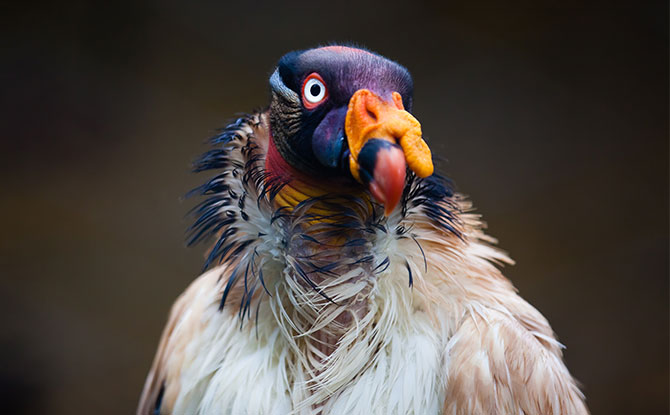

The king vulture is a fascinating bird species known for its scavenging habits and unique appearance. Found in the forests of Central and South America, this majestic creature plays a vital role in the ecosystem as one of nature’s efficient cleanup crew.
As a member of the scavenger birds family, the king vulture feeds on carrion, helping to remove decaying matter and prevent the spread of diseases. It has a remarkable ability to locate its food from great distances using its keen eyesight.
The king vulture’s habitat includes tropical rainforests and woodlands, where it can find an abundance of food sources. It is often spotted perched high in the treetops, scanning the forest floor for carrion or following other scavenger birds to locate a meal.
With its striking appearance, the king vulture is hard to miss. It has a bald, brightly colored head, ranging from red, orange, and yellow, and contrasting with its black and white body feathers. This unique combination of colors serves multiple purposes, including regulating its body temperature and attracting potential mates.
Kissing Gourami
The kissing gourami is a popular freshwater fish known for its unique behavior of “kissing” or puckering its lips. It is also referred to as the kissing fish or kissing fish gourami.
The kissing gourami is native to Southeast Asia, particularly in Thailand, Cambodia, and Indonesia. It is commonly found in slow-moving rivers, lakes, and ponds with dense vegetation.
An interesting fact about the kissing gourami is that it puckers its lips to defend its territory or establish dominance. This behavior is commonly observed during breeding or feeding time.
When it comes to diet, the kissing gourami is an omnivorous fish. It feeds on both plant matter, such as algae and aquatic plants, as well as small invertebrates and insects.
Kissing gouramis are generally peaceful fish but can become territorial, especially during the breeding season.
Komondor
The Komondor is a unique breed of dog originating from Hungary. Known for its distinctive corded coat, this large Hungarian sheepdog is not only visually striking but also possesses a fascinating history and temperament.
The Komondor’s origins can be traced back to ancient Hungarian tribes, where they were primarily used to guard livestock, including sheep. With their strong protective instincts, these dogs were highly valued for their ability to deter predators and keep the flock safe.
One of the most notable features of the Komondor is its corded coat, which consists of long, dense, and intertwined cords of hair. This unique coat serves as insulation, protecting the dog from harsh weather conditions and potential attacks by predators.
Despite their somewhat imposing appearance, Komondors are known to be gentle, loyal, and affectionate with their families. However, they have a strong protective instinct and can be wary of strangers. Early socialization and consistent, positive training are essential to raise a well-rounded and well-behaved Komondor.
Kangaroo Mouse
The kangaroo mouse is a fascinating desert rodent known for its unique adaptations and kangaroo-like hopping. These small mice are found in arid regions of North America, such as the deserts of Mexico and the southwestern United States.
One of the most distinctive features of the kangaroo mouse is its powerful hind legs, which allow it to leap and hop like a kangaroo. This adaptation is essential for navigating the sandy and rocky terrain of its desert habitat. The kangaroo mouse’s long tail provides balance during these impressive jumps.
In addition to their hopping ability, kangaroo mice have other adaptations that help them survive in the harsh desert environment. Their fur is specially designed to protect them from extreme temperatures, keeping them cool during the scorching daytime heat and warm during chilly nights. They also have specialized kidneys that enable them to conserve water more efficiently, allowing them to survive on scarce water sources.
As for diet, kangaroo mice are primarily herbivorous, feeding on seeds, plant material, and insects. They are well-adapted to obtaining water from their food, which reduces their dependence on external water sources.
Despite their small size, kangaroo mice are highly resilient and have impressive survival abilities. They are primarily nocturnal, avoiding the intense daytime heat by hiding in underground burrows or shaded areas. These burrows not only provide shelter from the extreme temperatures but also protect them from predators such as snakes and birds of prey.
Kangaroo mice are solitary animals, except during the breeding season when male and female mice come together to mate. Females give birth to small litters of 2 to 6 pups and play a significant role in nurturing and protecting their offspring.
So there you have it! The amazing world of animals that start with K. If you enjoyed this article, we think that you will also enjoy this one about animals that start with J.








